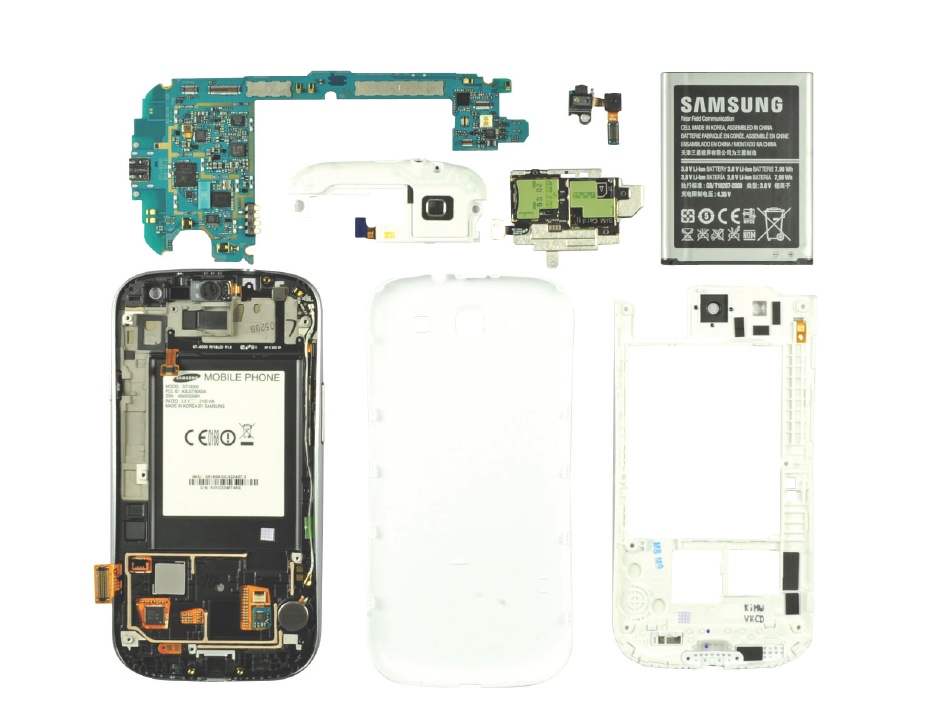Inside the Galaxy S III

[fototag id=”S3teardown”]
The Galaxy S III is the latest iteration of Samsung’s Galaxy series of smartphones. It runs on the cutting-edge version of the Android OS, Ice Cream Sandwich, and delivers a raft of new hardware and software.
In terms of hardware, the S III’s arsenal includes a 1.4GHz, quad-core CPU, a 720 x 1,280 HD Super AMOLED capacitive touchscreen, 1GB of RAM, 16-64GB of storage space, an eight-megapixel rear camera, a 2,100mAh lithium-ion battery and a whole host of connectivity and motion sensors, including an accelerometer, gyro, Wi-Fi module and RF transceiver among others.
As far as the device’s hardware specs go, a couple of elements of the S III stand out. The phone’s Multi-Chip Package (MCP), for instance, allows the majority of its memory chips – regardless of type – to be integrated into a single bundle. As such, the S III’s NAND flash, NOR flash and SDRAM/DRAM memory chips are all situated on the MCP; this enables the memory subsystem to view and access the chips as a single, unified block, granting incredibly high data transfer rates.
The other hardware element worth mentioning is the S III’s 12.2-centimetre (4.8-inch), Gorilla Glass display. The screen adopts Samsung’s HD Super AMOLED screen technology, which – thanks to the inclusion of two sub-pixels per every pixel on the display – allows the S III to generate great contrast ratios and clean colours. Bonded directly to the display is a piece of Corning Gorilla Glass, which is a form of alkali-aluminosilicate sheet glass that specialises in preventing scratches and cracks if the device is dropped. This is thanks to its ion exchange manufacturing process: the glass is bathed in molten potassium nitrate to force sodium ions to exchange with 30 per cent larger potassium ions in order to toughen up the material.
In terms of software, the S III has a couple of new additions that are integrated efficiently into Ice Cream Sandwich’s host of stock OS features (for a rundown of these see the Galaxy Nexus article in issue 30 of How It Works). The first of these is Smart Stay, a piece of software that utilises the S III’s front-mounted camera to continuously track your eyes and, as a consequence, ensure the display stays lit whenever a user is looking at it or dim/off if they are not. Testing revealed the feature worked roughly 80 per cent of the time.
The other notable software inclusion is not entirely new but the next iteration of Samsung’s voice-recognition app: S Voice. This is a Siri-like program that, through its use of a natural language user interface and various web services, such as Wolfram Alpha, allows basic commands and queries to be automatically responded to.





